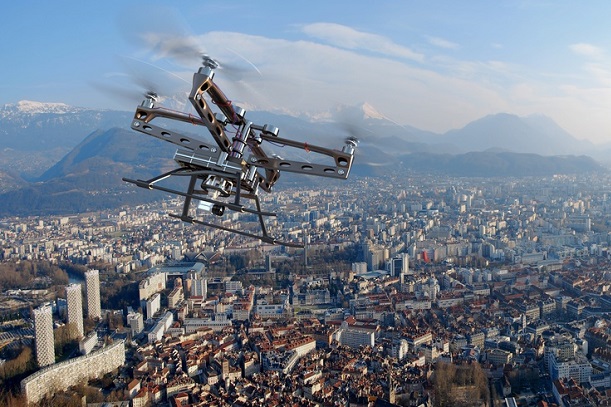LTE-Advanced networks could be used to support drones in the entertainment, construction, delivery and construction industries, Qualcomm has claimed after extensive tests of the technology.
The chipset maker has been holding around 1,000 flights during the past few months at its UAS Flight Centre in San Diego at altitudes of under 400 feet.
It said signal strengths at altitude were robust even amid downturned antennas in an LTE network. The drones also benefited from better free space propagation conditions than a network on the ground.
Better propagation conditions also helped with handover, which Qualcomm said was also superior to typically more cluttered and multi-path networks on the ground. The clearer skies paved the way for more stable signals.
While Qualcomm noted downlink speeds were lower for drones at altitude compared to on the ground, it said the likelihood of coverage outage was broadly the same.
However, because of the more limited potential use cases for drones, Qualcomm said the lower speeds would not adversely affect potential use cases.
[Read more: TIM gets busy with drone, robot, virtual reality 5G demos]
Paul Guckian, Vice President, Engineering, said: “LTE evolution will take [drone deployment] to the next level, enabling our vision of wide-scale deployments of drones that are expected to reshape countless industries including construction, delivery, entertainment, insurance, mapping, news gathering, public safety, public utilities, railroads, real estate, agriculture, and wildlife conservation.”
He said further work was required to eliminate interference at uplink levels. While free space propagation aids handover, it also negatively affects interference at nearby cells.
He also recommended optimising power levels through the likes of optimised open-loop power control, which sets a target signal strength at a serving cell and uses downlink path loss estimation to reduce interference with other cells.
Finally, he recommended cell selection algorithms are further optimised to ensure drones connect to the strongest serving cell.
Guckian added: “The growing drone industry will benefit from the fast pace of innovation of the cellular ecosystem and continuous evolution of LTE technologies.”




